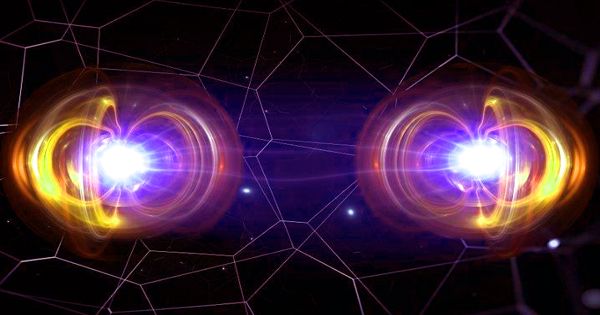Quantum computers today have up to a few hundred memory and processing units, the so-called qubits. Severin Daiss, Stefan Langenfeld, and colleagues from the Max Planck Institute of Quantum Optics in Garching have successfully interconnected two such qubits situated in separate laboratories to a distributed quantum computer by connecting qubits to 60-meter-long optical fiber. Over such a gap, they realized a quantum-logic gate-the fundamental building block of a quantum computer. It makes the machine the world’s first prototype of a distributed quantum computer.
Researchers realize quantum-logic computer operation between two separate quantum modules in different laboratories. Over such a distance they realized a quantum-logic gate – the basic building block of a quantum computer.
The limitations of previous qubit architectures
Quantum computers are significantly different from conventional “binary” computers: they are able to do complex calculations for which traditional computers would take months or even years—for example, in the field of data encryption and decryption. Although the output of binary computers comes from massive memories and short processing periods, the success of the quantum computer is based on the assumption that one single memory unit—a quantum bit, also known as “qubit”—can hold superpositions of multiple potential values at the same time.
Therefore, the quantum computer not only calculates one result at a time, but instead calculates several potential results in parallel. The further the qubits are entangled in a quantum computer; the more complicated the calculations can be made.
The fundamental computational operations of the quantum computer are the quantum-logical gates between two qubits. Such an operation changes-depending on the original state of the qubits-their quantum mechanical states. In order for a quantum computer to be superior to a conventional computer for different calculations, several hundreds or even thousands of qubits will have to be efficiently interconnected for similarly thousands of quantum operations.
Despite great victories, all existing laboratories are still struggling to develop such a big and stable quantum computer, as any additionally needed qubit makes it even harder to build a quantum computer in only one set-up. Qubits are performed, for example, with single atoms, superconductive elements, or light particles, all of which need to be perfectly separated from each other and the atmosphere. The more qubits are arranged close to each other, the simpler it is to separate and monitor both from outside at the same time.

Data line and processing unit combined
A recent review in the journal Science by Severin Daiss, Stefan Langenfeld, and colleagues from Gerhard Rempe’s research group at the Max Planck Institute of Quantum Optics in Garching presents one way to solve technological challenges in the construction of quantum computers. In this work, sponsored by the Institute of Photonic Sciences (Castelldefels, Spain), the team has succeeded in linking two-qubit modules over a distance of 60 meters in such a way that they effectively form a simple quantum computer with two qubits. “Over this distance, we conduct a quantum computing procedure between two separate qubit sets in different laboratories,” Daiss points out. This enables the possibility to merge smaller quantum computers into a joint processing unit.
Simply coupling remote qubits to induce entanglement between them has been accomplished in the past, but now the relation can also be used for quantum computing. For this reason, the researchers used modules consisting of a single atom as a qubit located between two mirrors. Between these devices, they give a single quantum light, a photon which is transported in the optical fiber. This photon is then entangled with the quantum states of the qubits of the various modules.
Subsequently, the condition of one of the qubits is modified according to the calculated state of the “ancilla photon,” performing a quantum mechanical CNOT operation with a fidelity of 80 percent. The next move will be to bind more than two modules and host more qubits in each node.
Higher performance quantum computers through distributed computing
Team leader and institute director Gerhard Rempe claims that the result would encourage more advances in technology: “Our scheme opens up a new development direction for distributed quantum computing.” It could make it possible, for example, to construct a distributed quantum computer consisting of a number of modules with few qubits that are interconnected with the newly implemented system. This solution could overcome the restriction of current quantum computers and incorporate more qubits into a single setup and could thus make for more efficient systems.















